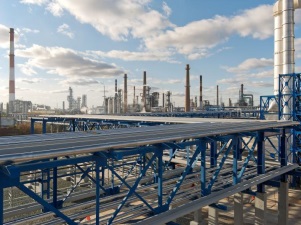Designed for testing on pilot batches of new types of catalysts, this new facility will also be used to test the efficiency of catalyst products already in production at the Omsk Refinery.
This pilot facility is a small-scale copy of production facilities designed for the production of catalytic cracking gasoline, with a height of 6.5 metres, and a production capacity of 2.5 kilogrammes per hour (on crude). The facility will replicate the catalytic cracking process under conditions as close as possible to those under actual production, allowing specialists to test new kinds of catalytic-cracking catalysts, identify and select the optimum conditions for their utilisation, evaluate the effectiveness of their application, and benchmark production at the Omsk Refinery against other producers.
Site preparation for the installation of equipment is currently ongoing at the Omsk Refinery, together with work on the installation of the foundations as well as the water-supply, ventilation, nitrogen supply and compressed air systems. Indian and Russian specialists will begin installation of the facility in June, with the first pilot test operations scheduled for autumn this year.
Oleg Belyavskiy, General Director of the Gazprom Neft Omsk Oil Refinery, commented: “This represents a unique experience for our plant: there are simply no other installations of such kind in Russia, and the Omsk Refinery will be the first enterprise to be given the opportunity of testing its own-produced catalysts under conditions as close as possible to those under actual production. Potential consumers will be able to undertake testing of our catalysts on their own crude, taking into account the specific characteristics of catalytic cracking complexes at other refineries. And the plant’s specialists, in partnership with Russian scientific establishments, will continue their very effective work in fine-tuning our catalytic cracking catalysts to ensure Russian refinery products meet international standards.”
27 Декабря 2025 | суббота | 14:48


